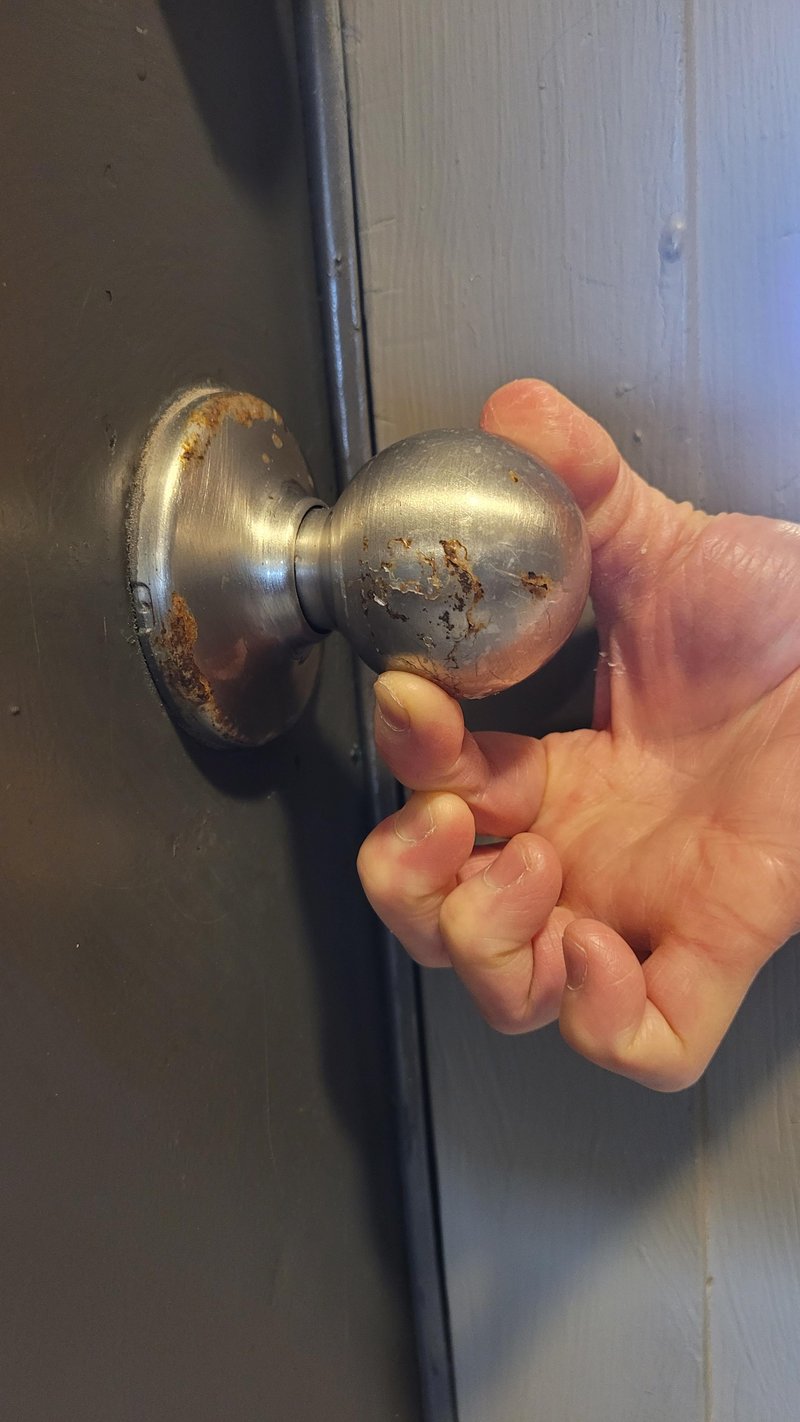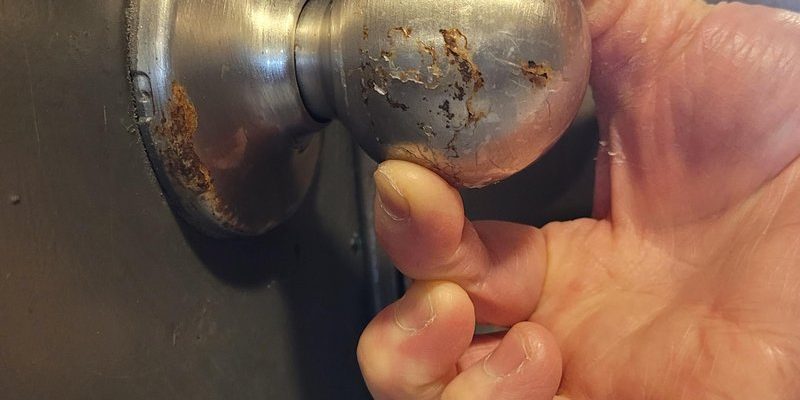
Here’s the thing: leaving insect residue on your locks isn’t just gross—it can actually make them harder to use. Buttons might stick. Keys might have trouble sliding in. If you’ve got a keypad, dried bug goo can even block the numbers. So, whether you’re dealing with an old-school key lock or a slick digital model, keeping things clean matters more than you’d think. Let’s break down how to get rid of insect residue safely, what you’ll need, and how to protect your lock for the long haul.
Why Insect Residue Is a Problem for Door Locks
First off, it’s easy to underestimate how much trouble a bunch of tiny splatters can cause. Insect residue is more than just an eyesore. When bugs hit your lock—especially on summer evenings when porch lights attract them like a magnet—they leave behind not just their bodies, but also sticky stuff like pollen, sap, and even bits of dirt. Over time, this mixture hardens and becomes surprisingly tough to remove.
Most modern locks, from classic brands like Yale and Kwikset to smart models with touchpads and key fobs, have sensitive mechanisms. Even a thin layer of sticky bug mess can jam up buttons, gum up keyholes, or make electronic readers less responsive. Ever tried to punch in a code when your keypad is covered in old bug goo? Honestly, it’s about as fun as trying to send a text message with gloves on.
Plus, if things stay damp under the residue, it can encourage corrosion. That means you’re not just dealing with bugs—you’re risking rust, electrical issues, and stiff, hard-to-turn keys. In other words: a tiny problem can turn into a big headache if you ignore it.
Tools and Supplies You’ll Need for Cleaning
You really don’t need fancy gadgets or special chemicals for this job—most people already have what they need at home. But, there are some things you *shouldn’t* use, especially if you’ve got a digital lock. Here’s a quick checklist of what works best:
- Soft microfiber cloths: They’re gentle and won’t scratch surfaces.
- Mild dish soap: Powerful enough to cut through residue, but safe for most lock finishes.
- Warm water: Helps loosen stuck-on bug goo.
- Old toothbrush or soft-bristle brush: Perfect for getting into keyholes and corners—not too stiff, though.
- Small bowl or bucket: For mixing your soap and water.
- Cotton swabs: Great for hitting tight spots on keypads or inside lock buttons.
- Optional: Isopropyl alcohol (70% or less): For stubborn, germy residues, but use sparingly and never on screens or painted finishes.
Pro tip: Never use abrasive scrubbers, WD-40, or household cleaners with ammonia or bleach. They can strip the finish or damage sensitive electronics.
Step-By-Step Guide: How To Clean Insect Residue Off Exterior Door Locks
Let’s get down to business. The method isn’t complicated, but rushing might leave you with streaks or new problems. Here’s a slow-and-steady walkthrough anyone can follow, even if you’ve never cleaned a lock before.
1. Prepare Your Cleaning Solution
Fill your bowl with warm water and add a drop or two of mild dish soap. You don’t need much—a little goes a long way. Mix gently until you see bubbles. Having your supplies ready before you start means you won’t be fumbling with sudsy hands.
2. Wipe Down the Surface
Dip one end of a microfiber cloth into your soapy water, wring it out so it’s damp but not dripping, and gently wipe the entire surface of your lock. Focus on areas where bugs collect—usually around the keyhole, keypad, and handle. If you see bigger, crustier spots, let the damp cloth sit on them for a minute to soften things up.
3. Scrub Gently—But Thoroughly
Use your brush or an old toothbrush to clean crevices, screw heads, and tricky spots. Don’t jam the brush into the lock mechanism itself—just work around the frame and surface. For locks with keypads, dab a cotton swab in the soapy water and carefully brush around each button.
4. Rinse and Dry Completely
Wipe away any leftover suds with a separate clean, damp cloth. Dry the lock with a fresh towel right away. Moisture left behind can cause rust, especially in older locks.
Here’s the thing: Don’t spray water or cleaner directly onto electronic keypads or card readers. Use a lightly dampened cloth instead to avoid short-circuiting sensitive parts.
What To Do About Stubborn Residue
Sometimes, no matter how gentle you are, there’s still a gross spot that just won’t budge. If you’ve got a sticky mess that’s laughing in the face of soap and water, don’t panic. There are a few tricks you can try:
- Isopropyl alcohol (on a cotton swab): This will dissolve stubborn residue, but only use it on metal, chrome, or stainless steel areas. Never use alcohol on a touch screen or painted/printed surface—it can damage them.
- Specialty lock cleaner: Hardware stores sometimes sell sprays made specifically for locks. These are safe for mechanisms but, again, spray onto a cloth—not the lock itself, especially if it’s smart.
- Let it soak (carefully): Hold a soaked (not dripping) cloth on the spot for a few minutes, then try again with your brush. Patience often beats brute force!
If none of this works, the residue may be inside the lock, not just on top. At that point, it might be worth disassembling the lock for a deeper clean—or calling in a locksmith, especially for high-end electronic or smart models.
How Insect Residue Affects Smart and Electronic Door Locks
With new locks, there’s more at stake than just a clean finish. If you’ve installed a keyless entry model—think Schlage Encode, Kwikset Halo, or Yale Assure—those sensitive electronics can be extra vulnerable to bug gunk. Here’s why:
- Keypads can short-circuit: Sticky residue lets moisture linger, and over time that seeps into the wiring or circuit board. You could end up with a lock that won’t pair, won’t recognize your code, or randomly resets itself after a rainy night.
- Battery compartment issues: Bugs sometimes crawl into battery slots. Dried goo can mess with the contacts, leading to power issues or connection glitches.
- Buttons might not register: Even the tiniest dried residue can block pressure pads, making it hard for the lock to register your touch—so your remote code, sync, or reset won’t work reliably.
If you use a smart lock with a remote, always check the remote itself for bug build-up—especially around the pairing and reset buttons. It’s a small detail, but it can save you from troubleshooting bigger problems later.
How Often Should You Clean Exterior Door Locks?
Most people don’t touch their locks until something goes wrong. Honestly, that’s how residue sneaks up on you. For homes in buggy areas, consider wiping down your locks every couple of weeks during peak season (usually late spring through early fall). If you’re near the woods, water, or have bright porch lights, it might be worth checking weekly.
Quick cleaning doesn’t just keep things looking good. It’s a kind of routine “code check” for your lock—making sure everything’s working as it should. If you spot sticky stuff or something isn’t working right, you can fix it before it turns into a reset or full troubleshooting session.
If you notice recurring build-up, you might want to:
- Swap your porch lights for yellow “bug” bulbs—they attract fewer insects.
- Add a small overhang or shield above the lock to deflect bug splatter.
- Double-check battery contacts and keyholes after big storms or swarms.
Protecting Your Lock From Future Insect Residue
Now that you’ve tackled the mess, let’s keep it from coming back. A little prevention goes a long way, especially for exterior hardware that’s exposed year-round. Here are some simple ways to protect your lock:
- Use a light silicone spray: Not WD-40—use a lock-specific spray very sparingly to make it harder for dirt and residue to stick next time. Spray onto a cloth, then wipe the lock (especially non-digital parts).
- Install a lock cover: Weatherproof covers can keep both bugs and rain off your locks, especially if you’re worried about insects seeping into keyholes.
- Keep the area around your lock clean: Sweep away cobwebs and dead insects regularly. Less nearby bug debris means less on the lock itself.
It’s a bit like putting sunscreen on before you get burned—doing a little bit now saves you a headache later. And if your lock still isn’t working right after a good clean, it could be an electrical, code, or battery issue, not just dirt—so don’t be afraid to check the manual or call in a pro if needed.
Is It Time to Replace or Upgrade Your Exterior Door Lock?
If you find yourself cleaning your lock every week and still fighting sticky bugs and malfunctions, it might be time to consider something different. Old locks sometimes have tiny cracks or loose seals where residue (and moisture) can sneak inside. No amount of cleaning will fix that.
Newer models—especially smart locks—are designed to be more weather- and bug-resistant, with tighter seals and better drainage. For example:
- Schlage Encode and Kwikset Halo models tend to have coated keypads that resist residue and moisture.
- Yale Assure locks often have covers or replaceable keypads if bugs become a recurring issue.
- Universal lock covers can work for many brands if you don’t want a full upgrade yet.
Upgrading also makes it easier to troubleshoot problems like stuck buttons, battery drain, or remote pairing issues, since newer models are built for easier maintenance.
Wrap-Up: Keeping Your Door Locks Clean and Working Smoothly
Honestly, cleaning insect residue off your exterior door lock is one of those chores that seems way more annoying than it is. But, as you’ve seen, it doesn’t take fancy tools or technical know-how—just a careful hand, the right supplies, and a little bit of patience. Whether you’re dealing with a stubborn old deadbolt or a shiny new Kwikset keypad, keeping things bug-free means your lock will work better, last longer, and look good every time you come home.
If you make cleaning part of your routine—even just a quick wipe when you notice build-up—you’ll save yourself from bigger troubleshooting down the line. And if things ever feel sticky, stuck, or just not right, now you know how to get your lock working like new again. Stay curious and keep your entryway smooth, safe, and welcoming.
